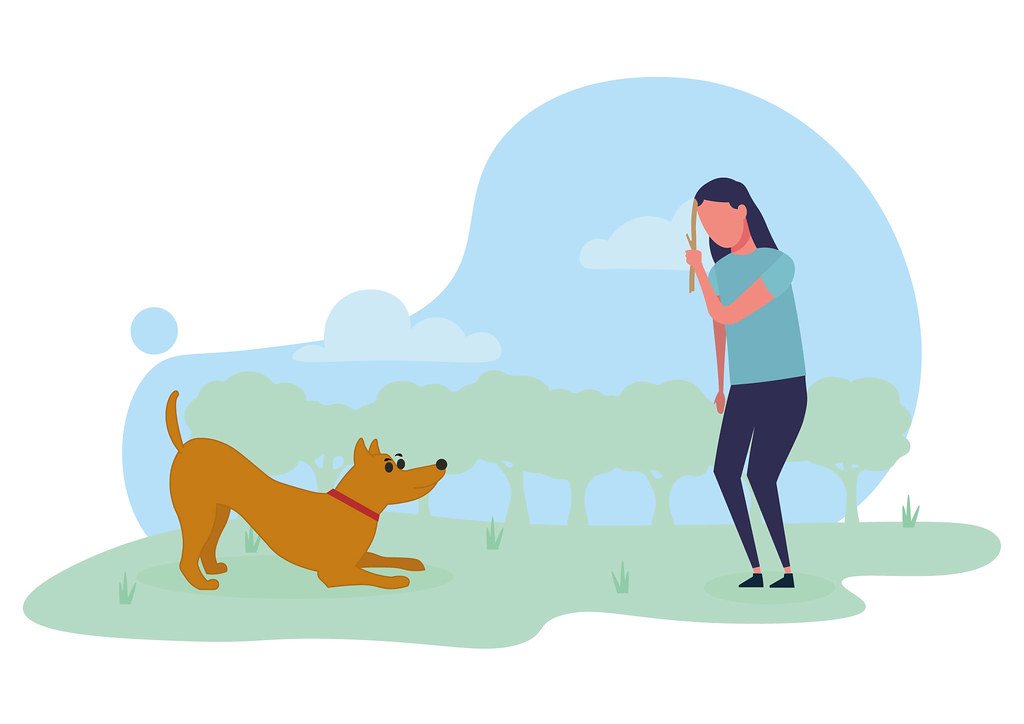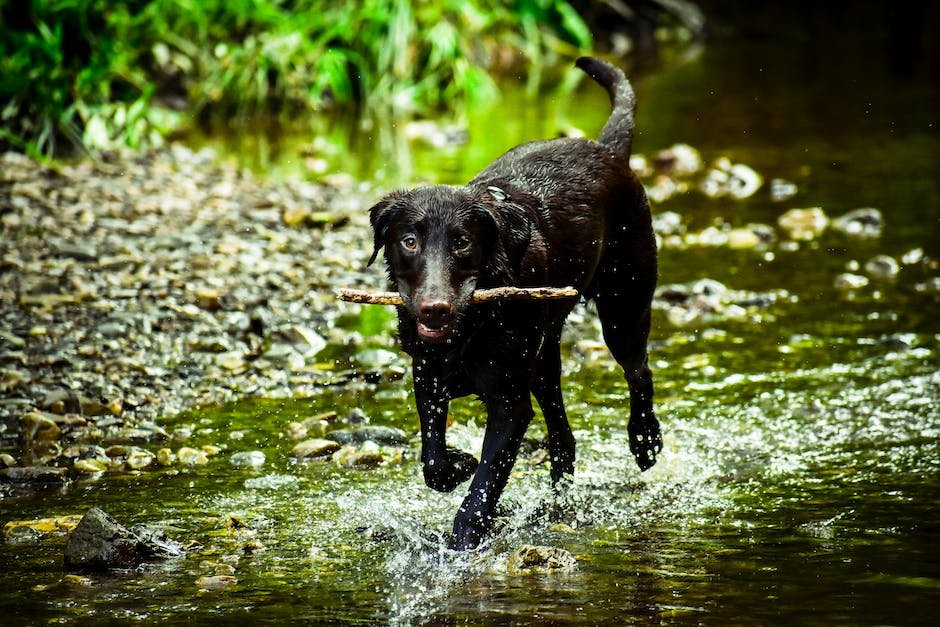Imagine a perfect day in the park, the sun is shining, and your furry friend is excitedly wagging his tail, eagerly waiting for the ultimate game of fetch. As you reach into your bag, instead of the worn-out tennis ball, you proudly pull out a sleek, vibrant fetch stick designed to elevate the timeless activity to new heights. With proper training and the right technique, a dog training fetch stick can transform your pet’s playtime, enhancing their obedience, focus, and most importantly, their enjoyment. In this article, we will take you through the ins and outs of utilizing a dog training fetch stick for retrieval, guiding you towards a bond-building adventure that is second to none.
Table of Contents
- The Importance of Using a Dog Training Fetch Stick
- Key Features to Look for in a Dog Training Fetch Stick
- Step-by-Step Guide for Effective Retrieval Training Using a Fetch Stick
- Expert Tips to Maximize the Benefits of Fetch Stick Training
- Ensuring Safe and Positive Training with a Fetch Stick
- Q&A
- Insights and Conclusions

The Importance of Using a Dog Training Fetch Stick
When it comes to training man’s best friend, dog owners often seek effective tools to help them in the process. One such tool that has gained popularity is the dog training fetch stick. Though it may seem like a simple object, the fetch stick serves multiple purposes that significantly contribute to your dog’s development.
1. Mental and Physical Stimulation: Using a dog training fetch stick allows your furry friend to engage in an interactive play session, providing mental and physical exercise. Tossing the stick and teaching your dog to fetch and retrieve it not only enhances their coordination but also stimulates cognitive abilities. This exercise can prevent excessive energy buildup and curb destructive behavior in your dog.
2. Bonding and Communication: Playing fetch with your dog using the fetch stick is not just a physical activity, but also a means of strengthening your bond. As you train and play together, it fosters a deeper connection and trust between you and your pet. The fetch stick serves as a tool for effective communication, enabling you to give commands and reinforce positive behavior.
3. Safety and Control: The fetch stick provides a controlled way of playing and exercising with your dog. The elongated shape ensures a safe distance between your hands and your dog’s mouth during the game. It also allows you to have better control over the direction and distance of the throws, ensuring a fun yet secure playtime for both of you.
So, whether you are looking to teach your dog new commands, engage in an exciting play session, or simply strengthen your bond, incorporating a dog training fetch stick into your routine can bring about numerous benefits for both you and your furry companion.

Key Features to Look for in a Dog Training Fetch Stick
When it comes to choosing the perfect fetch stick for your furry friend, there are several key features that you should consider. These features can make a world of difference in your dog’s training and playtime experience. So, before you make a purchase, here are some important factors to keep in mind:
- Durability: Look for a fetch stick that is made from durable materials such as rubber or nylon. This will ensure that it can withstand your dog’s incessant chewing and rough play without falling apart.
- Size: Consider the size of your dog and choose a fetch stick that is appropriate for their breed and age. A stick that is too small may pose a choking hazard, while one that is too large may be difficult for your dog to carry or retrieve.
- Visibility: Opt for a fetch stick that is brightly colored or has reflective strips. This will make it easier for your dog to spot the stick, even from a distance, ensuring hours of fun-filled fetch sessions.
- Texture: Dogs love different textures, so look for a fetch stick that has ridges or bumps. These added textures will not only make it more enticing for your dog to chase and retrieve but also provide them with some dental benefits as they gnaw on it.
- Safety: It is crucial to prioritize your dog’s safety during play. Avoid fetch sticks with sharp edges or small parts that can break off and become a choking hazard.
By considering these key features, you can select a fetch stick that both you and your dog will love. Remember, the right fetch stick can bring countless hours of joy, exercise, and bonding between you and your loyal companion.

Step-by-Step Guide for Effective Retrieval Training Using a Fetch Stick
You and your furry friend love playing fetch, but sometimes it can be a challenge to get them to bring the toy back. That’s where retrieval training comes in! With our step-by-step guide, you’ll learn how to effectively train your dog to reliably retrieve a fetch stick.
Step 1: Get the right fetch stick. Look for a stick that is lightweight and easy for your dog to pick up. Avoid sticks with sharp edges or splinters that could harm your pup.
Step 2: Introduce the fetch stick. Show your dog the fetch stick and let them sniff it. Encourage them to interact with it by using positive reinforcement, such as treats or praise.
Step 3: Teach the “take it” command. Hold the fetch stick in your hand and say “take it” as you offer it to your dog. When they take the stick in their mouth, reward them with a treat and praise. Repeat this step until your dog understands the command.
Step 4: Practice retrieving. Throw the fetch stick a short distance and command your dog to “fetch.” Encourage them to bring the stick back to you by calling their name or using a command like “come.” When they return with the stick, reward them with a treat and praise.
Step 5: Increase the distance. Gradually increase the distance you throw the fetch stick, always using the “fetch” command. Remember to reward and praise your dog for successfully retrieving the stick.
Step 6: Repeat and reinforce. Practice retrieval training regularly to reinforce the behavior. Over time, your dog will become more proficient at fetching the stick and bringing it back to you.

Expert Tips to Maximize the Benefits of Fetch Stick Training
When it comes to fetch stick training, there are a few expert tips that can help you ensure you and your furry friend get the most out of the experience. With these techniques, you’ll not only enhance your dog’s physical fitness, but also strengthen the bond between you and your loyal companion.
Tips to remember during fetch stick training:
- Start with the basics: Before moving on to more complex commands, make sure your dog has a solid foundation in the basic commands, such as “sit,” “stay,” and “come.” This will establish trust and improve their overall responsiveness during fetch stick training.
- Use positive reinforcement: Reward your dog with treats, praise, and affection when they successfully retrieve and return the stick. This positive reinforcement will reinforce good behavior and make the training sessions more enjoyable for both of you.
- Gradually increase distance: Begin by throwing the stick short distances and gradually increase the distance as your dog becomes more comfortable and proficient at retrieving. This will challenge them while keeping the training fun and engaging.
- Make it a game: Incorporate playful elements into the training session, such as hiding the stick or using different throwing techniques to keep your dog stimulated and eager to participate. Remember, fetch stick training should be an enjoyable experience for both you and your furry friend.
By following these expert tips, you’ll be well on your way to maximizing the benefits of fetch stick training. Remember to always be patient, consistent, and most importantly, have fun with your dog as you embark on this exciting journey together!
Ensuring Safe and Positive Training with a Fetch Stick
When it comes to training your furry friend, safety and positivity are key. That’s why we recommend using a fetch stick for a fun and secure training experience. Here are a few tips to ensure safe and positive training:
1. Choose the right fetch stick:
- Opt for a fetch stick that is made from non-toxic and durable materials to ensure your dog’s safety.
- Ensure that the fetch stick is properly sized for your dog’s breed and size, as using an oversized or undersized stick can lead to accidents.
2. Use positive reinforcement:
- During training sessions, always reward your dog with treats, praise, or a pat on the back when they successfully retrieve the stick.
- Avoid scolding or punishing your dog if they don’t immediately grasp the concept. Instead, be patient and gentle, and gradually increase their understanding through positive reinforcement.
3. Stay alert and supervise:
- While using a fetch stick, it’s important to supervise your dog at all times to prevent any accidents or injuries.
- Be cautious of your surroundings and make sure there are no hazards or obstacles that can harm your dog during training.
A fetch stick can be a fantastic tool for bonding with your furry companion and teaching them valuable skills. By following these tips, you can ensure that your training sessions are both safe and positive experiences for you and your canine friend.
Q&A
What is a dog training fetch stick?
The dog training fetch stick is a specially designed tool used in dog training to teach and encourage dogs to retrieve objects. It is typically made of durable materials and has a convenient handle for the trainer to hold.
Why is retrieval training important for dogs?
Retrieval training not only stimulates your dog mentally and physically but also strengthens your bond with them. It teaches them obedience, improves their focus, and satisfies their natural instinct to chase and retrieve objects.
How do I introduce the fetch stick to my dog?
Begin by getting your dog excited about the fetch stick. Let them sniff and inspect it, then engage them in play using the stick. Encourage them to chase and grab it, reinforcing positive behavior with treats or praise.
What are some tips for using the fetch stick during training sessions?
Start with short training sessions and gradually increase the duration as your dog becomes more comfortable. Use a consistent command such as “fetch” to associate the behavior with the action. Always reward your dog with a treat or verbal praise when they successfully retrieve the stick.
How can I keep my dog motivated during fetch stick training?
Keep the training sessions fun and exciting by using high-value treats as rewards. Vary the distance and angle you throw the stick, making it challenging for your dog. Also, try incorporating playtime and enthusiasm into the training to maintain their interest.
Are there any safety precautions I should consider?
Always use a fetch stick made of non-toxic materials that are safe for your dog to chew on. Avoid sticks with sharp edges or small parts that can pose a choking hazard. Additionally, supervise your dog during training to prevent any accidents or inappropriate chewing.
What if my dog loses interest in the fetch stick?
If your dog loses interest, try using different objects or toys during training to provide variety. It’s also helpful to end each training session on a positive note, so your dog associates the fetch stick with a rewarding experience. If needed, consult with a professional dog trainer for additional guidance.
Insights and Conclusions
As we reach the end of this guide, we hope that you have found valuable insights into the art of using a dog training fetch stick for retrieval. Remember, this simple yet powerful tool can be a game-changer in strengthening the bond between you and your furry companion, while simultaneously honing their retrieving skills.
As you embark on this journey with your loyal four-legged friend, always remember to prioritize patience, consistency, and above all, the joy of playing together. The endless hours of fetch, the shared laughter, and the unbreakable bond that forms are worth every effort, as you witness your furry friend bounding across fields, their tail wagging with pure exhilaration.
Step by step, you have discovered the key techniques to effectively introduce and utilize the fetch stick for training purposes. From the basics of a proper grip and rewarding positive behavior, to gradually extending distances and embracing challenges, you are now equipped to take your dog’s fetching skills to new heights.
So, what are you waiting for? Grab that fetch stick, slip into your favorite outdoor gear, and head to your nearest open space. Embrace the art of throwing, retrieving, and watch as your pup’s natural instincts come alive. Bask in the joy of witnessing their growth, enthusiasm, and unwavering loyalty.
Remember, every dog is unique, and progress may vary. Be patient with them, as they are with you. Celebrate both the big and small milestones along the way. From that very first successful fetch to moments where your pup’s gleaming eyes show their pride, together, you are unstoppable.
Now, fellow dog enthusiasts, it’s time to seize the day and embark on this rewarding training journey. May your fetch sessions be filled with laughter, wagging tails, and unforgettable memories. Keep exploring, keep loving, and above all, keep fetchin’!
As an affiliate, my content may feature links to products I personally use and recommend. By taking action, like subscribing or making a purchase, you’ll be supporting my work and fueling my taco cravings at the same time. Win-win, right?
Want to read more? Check out our Affiliate Disclosure page.